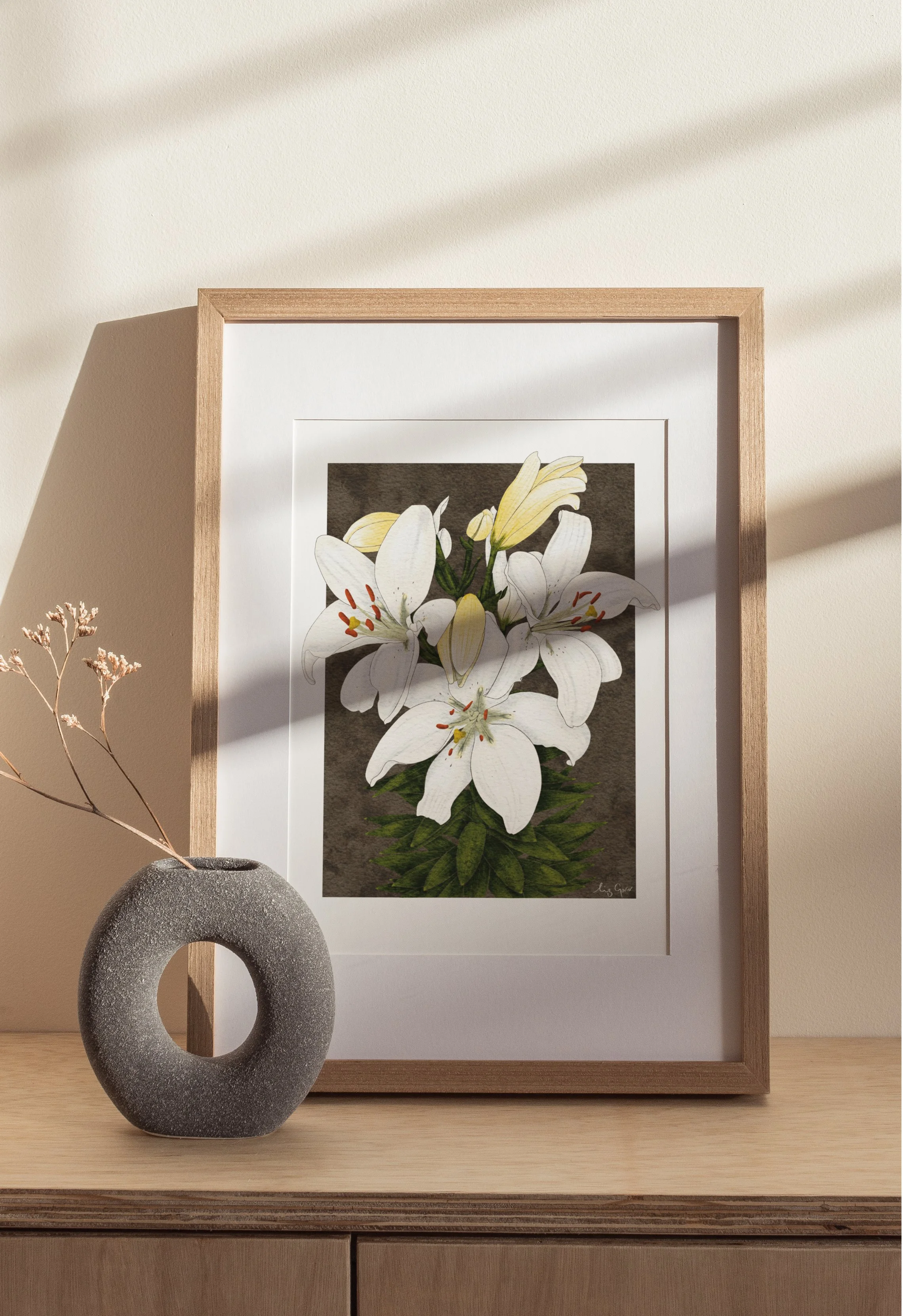Caring for Your Art Prints: A Collector’s Guide
Fine art prints are designed to last for generations when cared for properly. Whether you’ve chosen a single botanical print to elevate a quiet corner, or you’re beginning a collection of artworks from Liz Govier Art Studio, the way you frame, display, and handle your prints makes a lasting difference.
In this guide, I’ll share simple steps to protect and preserve your prints so they remain as beautiful as the day you received them.
Handle with Care
When you first receive your print, take a moment to prepare a clean, dry surface before unwrapping it. Always handle prints by the edges or wear clean cotton gloves to prevent natural oils from transferring onto the paper.
These fine art prints are produced using archival inks and museum-grade papers — designed to be long-lasting, but still sensitive to touch and moisture.
Archival quality papers and inks ensure each fine art print retains its rich colour and texture for years to come.
Framing for Longevity
Choosing the right frame and mount isn’t just about presentation — it’s also about protection. A professional frame with UV-protective glass helps shield your artwork from sunlight, while an acid-free mount prevents discolouration over time.
If you enjoy a natural look, an oak or maple frame complements botanical and floral subjects beautifully, while black frames add contrast and focus to monochrome or architectural pieces.
Framed in oak effect with a white mount, the ‘White Lilies’ print captures elegance and calm in a timeless setting.
Watch as I frame one of my botanical art prints in the studio — a look at how careful handling and presentation can elevate the artwork while keeping it protected for years to com
Framing an art print in the studio — each step taken with care to preserve detail and ensure a timeless finish.
Choosing the Right Space
Even when framed, prints are best displayed away from direct sunlight, radiators, or areas of high humidity. Moderate, consistent light is ideal for preserving the pigments.
Spaces like living rooms, bedrooms, and hallways often provide stable conditions — and these environments allow the art to become part of your daily rhythm, appreciated in soft, natural light.
‘Lupins’ fine art print displayed in soft natural light — a perfect balance of vibrancy and care.
Regular Maintenance
Dust frames and glass gently with a clean, soft cloth — avoid sprays or polishes near your artwork. If your print ever needs reframing, handle it with care and ensure all materials in contact with the paper remain acid-free.
For collectors with multiple pieces, it’s worth rotating artworks occasionally, giving each one time away from strong light sources.
Gentle maintenance and mindful placement help fine art prints remain pristine for decades.
Displaying with Intention
Every piece in your collection carries its own presence — from the warmth of Carnaby Iris to the timeless calm of Madame Alfred Carrière. When displayed thoughtfully, these prints not only preserve their quality but also bring enduring character to your home.
‘Carnaby Iris’ brings warmth and structure to a light-filled space — an artwork designed to last.
Closing Reflection
Collecting art is a long-term relationship — one built on appreciation, care, and connection. With a few simple steps, your fine art prints can be cherished and enjoyed for generations.
For more insights and new additions to the collection, visit www.lizgovier.com.
A Final Note on Living with Art
A well-cared-for artwork becomes part of the rhythm of your home — shifting with the light, the seasons, and the memories made around it. A framed print, when thoughtfully placed, brings a quiet continuity to your space. With time, it’s not just a piece of art you preserve, but the feeling it evokes each day.
White Lilies framed and styled in natural light. The gentle shadows and soft textures highlight how thoughtful display and environment can enhance the life and beauty of an art print.






